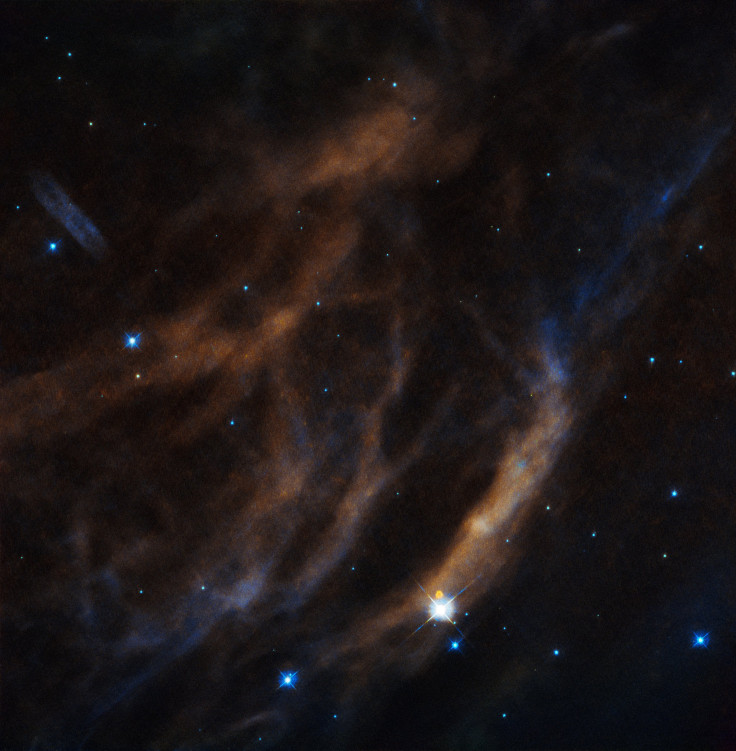Sh2-308: Hubble Spies A Shell Of Gas Surrounding A Nearby Wolf-Rayet Star

Astronomers using the Hubble Space Telescope have captured a stunning image of a nebula located 5,200 light-years from Earth. Located in the direction of the constellation Canis Major, the nebula enshrouds a large, bright star named EZ Canis Majoris.
“EZ Canis Majoris is responsible for creating the bubble of Sh2-308 — the star threw off its outer layers to create the strands visible here. The intense and ongoing radiation from the star pushes the bubble out farther and farther, blowing it bigger and bigger,” the European Space Agency said in a statement accompanying the image. “Beautiful as these cosmic bubbles are, they are fleeting. The same stars that form them will also cause their death, eclipsing and subsuming them in violent supernova explosions.”
EZ Canis Majoris is a Wolf-Rayet star — a category of objects that “live fast and die hard,” exploding as supernova and blasting vast amounts of heavy elements into space used by later generations of stars and planets. Scientists study these celestial giants, which are at least 20 times more massive than our sun, in order to understand how the largest and most massive stars in the universe evolve.
“Unfortunately, the lifecycle of a Wolf-Rayet star is only a few hundred thousand years — the blink of an eye in cosmic terms,” NASA explained in a statement released last year. “Despite beginning life with a mass at least 20 times that of the sun, Wolf-Rayet stars typically lose half their mass in less than 100,000 years.”
Scientists believe that the nebulae surrounding Wolf-Rayet stars — nebulae are frequently ring-shaped or spherical — are created when fast-moving stellar winds interact with the outer layers of hydrogen ejected by these bright and massive stars.
“Thick winds continually poured off the progenitors of such stars, flooding their surroundings and draining the outer layers of the Wolf-Rayet stars,” NASA said.
The Hubble Space Telescope was launched aboard NASA’s space shuttle Discovery on April 24, 1990. Since then, it has not only captured photos of an unimaginable number of truly spectacular nebulae and galaxies, it has also peered back over 13 billion years in time, to look at our cosmos in its infancy, giving us, as NASA aptly said in an earlier statement, “a front row seat to the awe inspiring universe we live in."
© Copyright IBTimes 2024. All rights reserved.






















